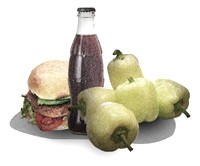Reading between the grocery store lines
Choosing healthy foods at a grocery store is a daunting task if you have no idea how to read a package.
Besides the complicated ingredient names and the often-confusing numbers and percentages on the nutrition facts table, the food manufacturers are sneaky when they add health claims to the front of their food packages. What exactly does “light” mean, anyway? When it states, “30 per cent less sodium,” what does that compare to?
Health Canada has regulations for when companies can use certain health claims, but not all health claims are regulated.
The following lists a few of the more common health claims – and what they really mean – that you find on food packages:
Organic: The Food and Drug Administration ensures that “certified organic” products must contain 95 per cent organic ingredients. If the product contains between 70 and 90 per cent organic ingredients, it must state what percentage of the ingredients are organic, and these products are not allowed to use the “organic” logo on their packaging.
Free-range: A claim frequently found on egg cartons, “free-range” does not necessarily mean that the chicken has roamed in grassy fields all her life. They can be cooped up in a very small area with only occasional access to the outdoors. It also tells the consumer nothing about hormones or antibiotics.
Reduced-fat: This means that the food has 25 per cent less fat in it than the original version. It does not, however, tell the consumer how much fat was in the original version; if the food product contained an astronomically high amount of fat in the original version, then it could still have a high fat content in this “reduced” version.
Natural: There are no regulations on the term “natural.” It can mean anything that the food manufacturer wants it to mean, so it is best to completely ignore this term when you see it on a food product.
Light: This may mean anything from “light-coloured” to “reduced in fat.” A bottle of cooking oil with this “light” claim on the front of the package refers to the colour, not the amount of fat in it.
Read beyond the front label the next time you are grocery shopping and use this information to make a healthier choice when you are comparing brands. There is some benefit to reading the health claims on the front package of a food product, but consumers should treat them with caution.
Health claims are often ambiguous and vague and, as consumers, we have a right to know what these health claims really mean. Turn the package over to read the ingredient list for detailed information on what is inside the package.
When in doubt, you can also contact the food manufacturers themselves to find out what they really mean by the health claims that they have used on their product.
Published in Volume 64, Number 23 of The Uniter (March 18, 2010)







